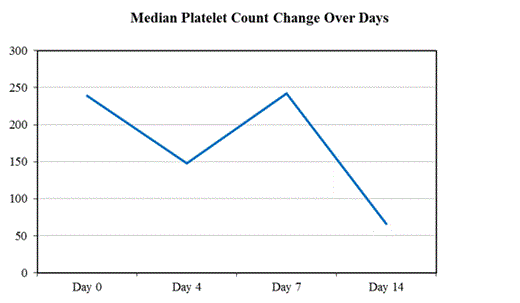Abstract
Background: Heparin-induced thrombocytopenia (HIT) is a pro-thrombotic and potentially lethal disorder caused by platelet-, endothelial-, and monocyte-activating antibodies that target multimolecular complexes of platelet factor 4 (PF4) and heparin. HIT is reported to occur in 0.2% to 5% of heparin-treated adults. Due to the diagnostic dilemma posed by the disease, various pre-test probability systems have been proposed. The most widely used 4Ts score has demonstrated high sensitivity but is limited by observer bias and its limited utility for intermediate scores. The anti-PF4/heparin antibody testing has sensitivity close to 100%, but its poor positive predictive value, low specificity and long turnaround time may lead to misdiagnosis and unnecessary treatment. Hence functional assays like 14C-serotonin release assay (SRA) are used for confirmation of diagnosis. These tests are highly specific for diagnosis but their use is restricted to a small number of reference laboratories.
In this study, we describe a phenomenon which is seen in HIT patients and will help to improve the positive predictive value of 4T score.
Hypothesis: Initial heparin exposure leads to a transient decrease in platelet count(less than 50% from presentation) which recovers close to baseline in a few days. Recovery from the transient drop is followed by a steeper drop in platelet count. This second substantial decline in platelet count is characteristic of HIT.
Methods and objectives: We screened all hospitalized patients from 2008-2013 with ICD9 code for HIT (289.84) at discharge from Kings County Hospital and SUNY Downstate. One hundred fifty four patients were screened. Only patients with positive anti-PF4/heparin antibody test (HAT) and 14C-serotonin release assay (SRA) were included in the study.
Results: Of the 154 patients, 54 patients had a positive HAT; 11 had positive HAT and SRA. Of the 11 patients included in the study, 4 (36.4%) were on VTE prophylaxis with unfractionated heparin (UFH), 6 (54.5%) were on UFH drip and 1 (9%) was on therapeutic dose of Enoxaparin. Out of 11 patients (81.2%), 9 were male with a median age of 68.
Ten out of 11 patients (91%) demonstrated the transient platelet-reduction phenomenon. The median platelet count for these patients on admission was 239k/µl. The initial decline was seen on day 4.5 (median) to nadir platelet count of 148K/µl (median) which signifies a 38% drop. Platelet count normalized to baseline by Day 7 to 245K/µl (median) which is a 39% recovery. The secondary drop occurred on median Day 14 to 68K/µl (median) which is a 68% reduction since the recovery. This secondary drop was uniformly associated with HIT. The data is demonstrated by means of a graph as shown below.
One patient in the study did not demonstrate this phenomenon. He developed HIT on day 4 of UFH exposure which is suggestive of pre-formed antibodies. Data regarding patient's prior exposure couldn't be obtained.
One patient in the study did not demonstrate this phenomenon. He developed HIT on day 4 of UFH exposure which is suggestive of pre-formed antibodies. Data regarding patient's prior exposure couldn't be obtained.
Conclusion: The exact mechanism of this transient platelet-reduction phenomenon stays unclear. In this small retrospective analysis, however, we observed this phenomenon in 91% of patients. All patients in this study had intermediate 4Ts scores; hence there may be a utility of this phenomenon in guiding treatment. Given the small sample size of patients, it is difficult to extrapolate this data to the general population. A multicentric study with larger sample size may help us in determining the utility of this phenomenon as a supplement to 4T score for HIT.
No relevant conflicts of interest to declare.
Author notes
Asterisk with author names denotes non-ASH members.


This feature is available to Subscribers Only
Sign In or Create an Account Close Modal